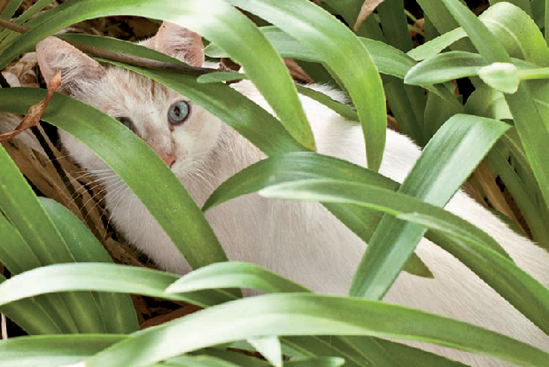Chapter 1. Understanding Exposure
Photography is the art of capturing light. You use your camera's lens to focus the light and the sensor to record the light, creating an exposure. As a photographer, your job is to decide how much light the sensor is allowed to record, how long the shutter is opened, and how big the opening is in the lens to let in light. You also get to decide how sensitive the sensor is to light. All these factors let you control the exposure. You need to understand the exposure modes and light metering to help get the proper exposures and how to use the histogram to check your exposures. Picking the right file type to store your image is also important because it can make a big difference if you need to adjust the exposure in post processing.

Using the proper settings enabled me to capture the light cat in the darker shadows without losing detail in either. 1/320 second, f/4.5, ISO 800.
Defining Exposure
The basic definition of exposure is very simple: The exposure is the amount of light that is allowed to reach the sensor in your camera to create a photograph. The amount of light that reaches the sensor is controlled by two main factors: the length of time the shutter is open (shutter speed) and the size of the opening through which it flows (aperture). A third factor — ISO — changes the sensitivity of the camera's sensor to light, which can be used to modify the ...
Get Exposure Digital Field Guide now with the O’Reilly learning platform.
O’Reilly members experience books, live events, courses curated by job role, and more from O’Reilly and nearly 200 top publishers.

